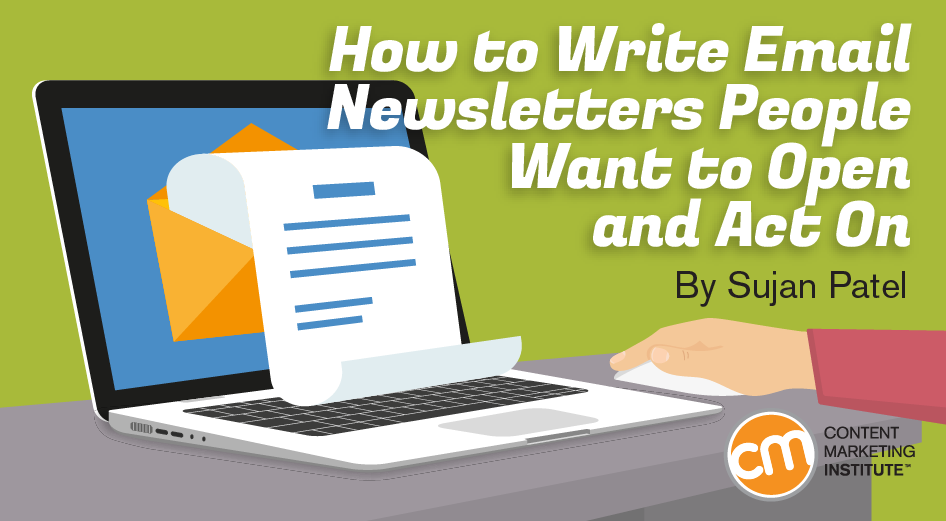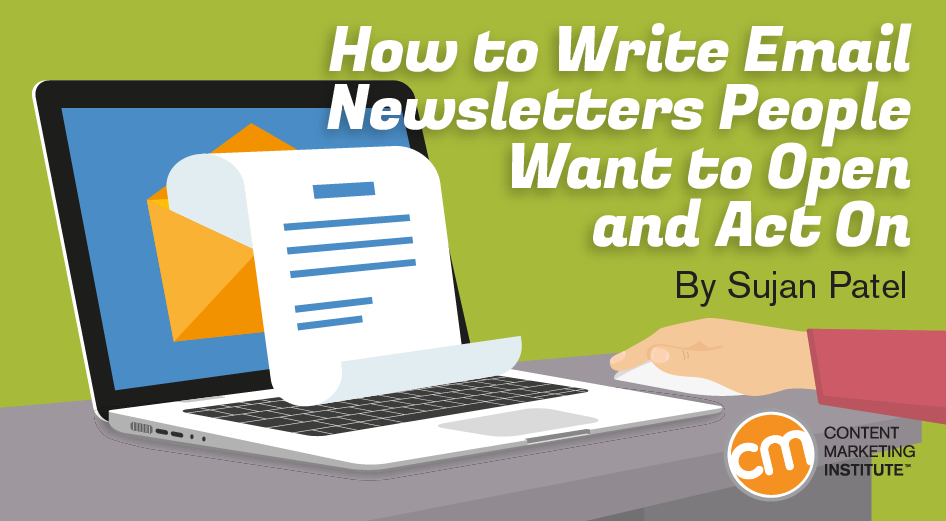How to Write Email Newsletters People Want to Open and Act On. Only send when you have something to say Many companies seem to believe that a newsletter is something they should create and distribute routinely regardless of what they have (or don’t have) to say. Share some new content? Write great copy I receive poorly written email newsletters so frequently that I think the topic merits a mention. If it’s a legitimately great offer for something I’m interested in, then awesome. Allow subscribers to choose type and frequency of content Personalizing your subscribers’ choices will decrease the frequency of emails irrelevant to their interests and, in turn, increase the number of emails they receive that they actually want to read. Involve your designers in your newsletter. If few subscribers are taking an action, you have to ask why: Is it badly designed? Survey your subscribers – ask them what they want to see (and don’t want to see) in your newsletters. Or do you have any examples of really great (or really bad) emails to share?

Though a person receives an average of 88 emails a day, email is still widely regarded as one of the most effective marketing tools at our disposal.
The average open rate for marketing email across all industries is around 24% and the average click-through rate is around 4% (or 11% of opened emails).
Using those statistics, you can expect to drive approximately four visits to your site for every 100 emails sent.
Compare that to average click-through rates of 1.91% on Google’s search network and 0.35% on its display network, and an average CTR of 0.9% for a Facebook ad. Then factor the cost of sending email (generally, not very much), and you can see why 82% of marketers are investing heavily in email.
Of course, seeing a decent ROI on an email newsletter or campaign assumes the content is something its recipients actually want to read.
That isn’t always the case.
Bad email newsletters are a dime a dozen. Whether it’s the design, copy, or the marketing message itself, if your recipients aren’t reading and being swayed to act, you’re not going to see much, if any, return on investment.
With that in mind, let’s look at how to create email newsletters your customers actually want to read.
1. Only send when you have something to say
Many companies seem to believe that a newsletter is something they should create and distribute routinely regardless of what they have (or don’t have) to say.
Local news media share a similar struggle, only they have to produce content every day regardless of whether any events from the last 24 hours are genuinely newsworthy.
Case in point:

But businesses are not news media that must produce content to fill scheduled air time, newspapers, etc., because advertisers expect audiences to be informed on events in their local areas irrespective of the depth or quality of each day’s reporting.
Any company that follows a similar model with their emails risks losing subscribers.
Don’t want that to be your case?
Make sure you’re sending emails only when you have something worth saying.
2. Keep emails simple and focused
Do you want to tell your subscribers a piece of company news? Share some new content? Or tempt them with an offer? Choose one topic and stick to it.
Don’t pack your emails with so much content that subscribers have to work to establish whether they contain anything relevant to their needs or interests.
If you must include additional topics, mention them briefly after the main body of the email.
For example, here’s an email I sent recently:

I sent this to promote a video, and as you can see, that’s what I talk about for the majority of the email.
I do, however, tag on a quick P.S. to promote a podcast, and I make the most of the signature to link to my upcoming webinars and speaking engagements.
This approach allows me to diversify the content of my emails while maintaining their focus.
3. Write great copy
I receive poorly written email newsletters so frequently that I think the topic merits a mention.
Bad copy, whether in an email or any other marketing materials, turns customers off. At best, it looks unprofessional and says you don’t care. At worst, it damages your credibility and trust with your subscribers.
If you’re not a great copywriter, take a course to improve or hire someone else to do it. Not sure if you’re a great writer? The Hemingway App can help you gauge your skills and highlight ways to improve them.
4. Write concise copy
It’s not just the quality of your copy that’s important; the length matters too.
Few people want to read 500-word emails regardless of the writing quality. That means you must hone your ability to summarize information and write persuasive calls to action that entice readers to click and find out more.
Here’s an example of an email I recently received from Neil Patel.


COMMENTS